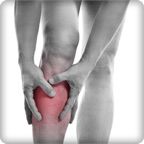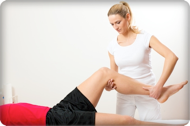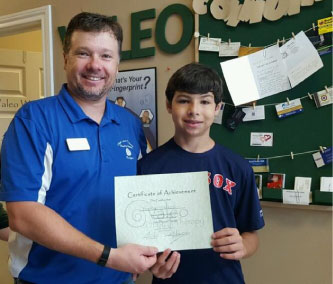Stop Shin Splints
Physical Therapy for Shin Splints
The shinbone or the tibia is the front surface of the lower leg. This part of the body is under constant stress and strain when we walk, jump and run. 
An overuse injury happens when a certain threshold of tolerance is crossed. This is a condition called shin splints. Intense pain occurs on the front, inside, outside and at times, the back of the lower leg. If left untreated, this pain can lead to stress fractures of the tibia. Shin splints occur due to damage and inflammation of the muscle tendons. The pain can be rather unbearable, forcing individuals to take prolonged periods of rest to allow for the inflammation to heal. Physical therapy plays an important role in the treatment of shin splints.
Visit your physical therapist if:
- There is a lingering pain after exercising or physical activity. The pain does not subside after 3-4 days of resting and icing the joint or limb.
- There is a dull pain, which recurs with activity.
- Pain does not resolve with over the counter pain relief medication.
- The lower leg is swollen or shows signs of bruising after activities.
Prevention, Diagnosis and Treatment of Shin Splints
Tips for Prevention of Shin Splints:
- Individuals with flat feet may benefit from wearing well-padded shoes.
- Warming up the limbs and body using a full body dynamic warm up is recommended.
- Wear a neoprene sleeve to keep the lower leg warm
- At the first sign of shin pain, discontinue the workout.
- Avoid running on concrete and other hard surfaces.
- Develop the habit of stretching periodically throughout the day.
- Lose weight if you are overweight to relieve load on the hip, knee and shin.
Diagnosis of Shin Splints: 
The history of the event that triggered the pain is an important clue. A clinical assessment that includes gentle pressure on the shin area and a variety of tests will be conducted by the physical therapist. Stress fractures, compartment syndrome, nerve entrapment and popliteal artery entrapment are a few of the conditions that must be considered.
Treatment of Shin Splints:
Foundations of treatment include Whole Body Cryotherapy and activity modification.
Gait and footwear analysis – An analysis of how a person walks and runs is an important part of treatment. Abnormal or modified walking patterns can transmit a great deal of force through the shin to the knee and hip. In such situations, physical therapists will work with you to correct/modify gait patterns and recommend footwear with shock absorbing capacity.
Muscle stretches and strengthening – The tibial and peroneal muscles are attached to the shin and must be warmed up adequately before any form of exercise. Your Physical Therapist will help you design a full body warm-up that will help get these muscles ready for activity. Strengthening supporting muscles can help support these areas and remove strain from the damaged muscles to allow faster healing.
Activity modification – Physical therapists may suggest alternative activities to minimize stress on the shinbones. These can include swimming and cycling.
Range of motion exercises – Exercises for the hip, knee, ankle and foot improve blood circulation, reduce inflammation and relieve pain.
Arch support – The absence or collapse of a normal foot arch may contribute to shin splints. Physical therapists may recommend appropriate orthotics that can be custom made for the patient and provide the appropriate amount of arch support.
Getting You Back on your Feet…
The Recovery Phase
The recovery phase varies and can take between 3 weeks to 6 months. Take it easy and work your way back to your favorite activities under the supervision of the physical therapist. Low or non-impact activities such as swimming, walking, bicycling can pave the way for progressive, load bearing exercises.
The shin splint has healed when: 
- The affected limb has regained strength and flexibility and is now comparable to the unaffected limb.
- There is no pain while jogging, sprinting and jumping.
Physical therapy can help you get back on your feet, and every member of our team is standing by to help you. We can help prevent further injury and pain, which is why an appointment should be scheduled at the first sign of discomfort.
The sooner you give us the opportunity to assess the injury and initiate treatment, the faster you will recover. Thank you for your time, and we look forward to helping you get back on your feet.

